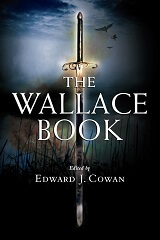
Through his personality, ingenuity and ability, he initiated a resistance movement which ultimately secured the nation's freedom and independence. Yet, Wallace was reviled, opposed and eventually betrayed by the nobility in his own day to re-surface in the epic poetry of the fifteenth century as a champion and liberator. Eventually, his legend overtook the historical reality, a process which has continued for centuries as manifested in modern media and film. A team of leading historians and critics from both Scotland and England investigate what is known of the medieval warrior's career from contemporary sources, most of which, unusually for a national hero, were created by his enemies. His reputation, from the time of his horrendous execution to the present, is examined to ascertain what the figure of Wallace meant to different generations of Scots. Too dangerous perhaps for his own era, he became the supreme Scottish hero of all time; the archetypal Scot who would teach kings and nobles where their duty lay, and who would live free or freely die for the liberty of his nation.
Chapter 1: William Wallace: ‘The Choice of the Estates’
Chapter 2: Sir William Wallace: What We Do – and Don’t – Know
Chapter 3: William, Son of Alan Wallace: The Documents
Chapter 4: The Battle of Stirling Bridge: An English Perspective
Chapter 5: John Duns Scotus and the Idea of Independence
Chapter 6: Bravehearts and Coronets: Images of William Wallace and the Scottish Nobility
Chapter 7: Unmapping the Territory: Blind Hary’s Wallace
Chapter 8: The Material Culture of William Wallace
Chapter 9: The English Cult of Wallace and the Blending of Nineteenth-Century Britain
Chapter 12: The Wallace Cult in the Twentieth Century: The Making of a Nationalist Icon
William Wallace: A Select Bibliography